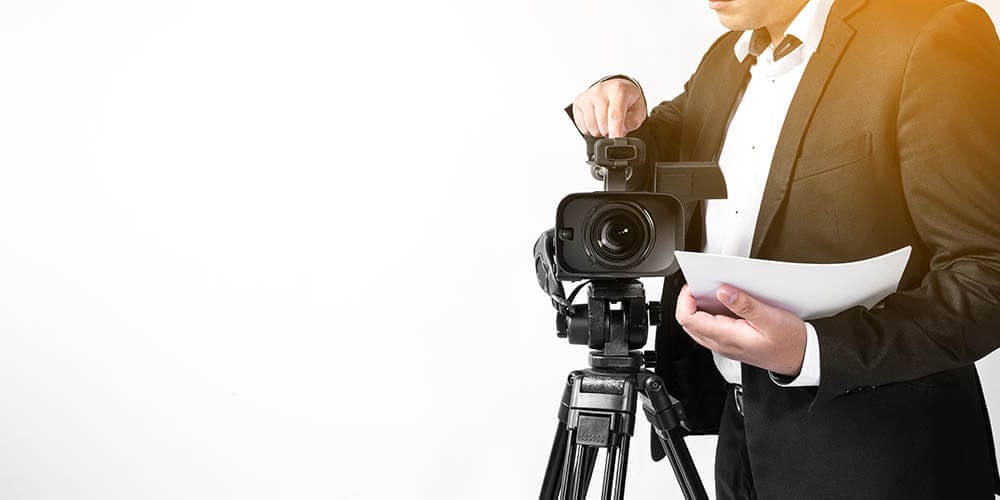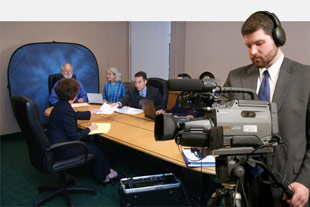Why Legal Videography is Essential for Accurate Legal Documents
Why Legal Videography is Essential for Accurate Legal Documents
Blog Article
Diving Into the Devices of Lawful Videography: Unveiling Its Procedure in Safeguarding Genuine Visual Testimony for Judicial Proceedings
In the world of judicial procedures, the role of legal videography stands as a cornerstone in preserving and providing aesthetic proof. As technology continues to breakthrough, the systems behind legal videography have actually become increasingly elaborate, offering a vital layer of credibility to testimonies caught on video.
Historical Advancement of Lawful Videography
Checking out the historical progression of lawful videography reveals a considerable improvement in the capturing and presentation of aesthetic proof within the lawful landscape. In the past, lawful proceedings heavily relied upon composed transcripts and photographs to document occasions and provide proof. Nonetheless, with the arrival of video technology, the lawful sector witnessed a standard shift in how visual statement was caught and offered.
The development of lawful videography can be mapped back to the late 20th century when improvements in video clip recording tools made it much more obtainable for use in court rooms. This technological improvement not only enhanced the precision and reliability of aesthetic evidence yet likewise changed the way situations existed to courts and juries (Legal Videography). Lawyers began to recognize the influential power of video clip recordings in conveying emotions, nuances, and non-verbal hints that created photos or records alone can not capture successfully

Innovation Improvements in Video Clip Paperwork
What essential technological innovations have revolutionized video paperwork in the lawful area? The lawful area has seen considerable innovations in video clip paperwork innovation that have actually boosted the authenticity and reliability of aesthetic evidence in judicial process. One of the vital advancements is high-definition (HD) video recording abilities, which supply crystal-clear images and sharp information that are important for accurately recording testaments, facial expressions, and various other aesthetic cues. In addition, the integration of timestamping and metadata functions in video documentation devices has allowed accurate documents of when and where the video was videotaped, making certain the integrity of the evidence presented in court.
Moreover, advancements in video encryption and watermarking technologies have actually bolstered the security and tamper-proof nature of video evidence, protecting it versus unapproved alterations or tampering. The arrival of cloud storage services and remote accessibility capacities has structured the storage space, retrieval, and sharing of video clip proof, helping with smooth collaboration amongst lawful professionals and ensuring effective access to essential aesthetic testimonies when needed. These technical advancements in video documentation have undoubtedly transformed the lawful area, boosting the precision, reputation, and admissibility of visual proof in judicial proceedings.
Function of Legal Videographers in Court Setups
The advancement of video clip documentation innovation in the legal field has actually demanded an important duty for legal videographers in courtroom setups, guaranteeing the honesty and reliability of visual testaments offered throughout judicial process. Legal videographers play a fundamental function in recording and maintaining exact aesthetic proof that can be crucial in court instances. Their obligation extends to setting up equipment, videotaping procedures, and generating top quality videos that properly mirror the events in the court.
In court setups, lawful videographers should adhere to rigorous standards and requirements to keep the authenticity of the visual document. They should have a keen eye for information and a detailed understanding of lawful procedures to make certain that the video footage they record is a true depiction of the events that transpired. In addition, lawful videographers often function carefully with lawful groups to make certain that the video proof aligns with the situation's requirements and can be properly provided in court to sustain the lawful disagreements being made. In general, the duty of legal videographers in court settings is vital in maintaining the concepts of justice and ensuring the transparency of legal proceedings.

Ensuring Admissibility and Integrity of Video Clip Proof
To keep the credibility of aesthetic proof presented in lawful process, making sure the admissibility and stability of video evidence is an essential responsibility for lawful videographers. Admissibility refers to the approval of evidence by the court, and for video clip evidence to be acceptable, it must satisfy certain standards. Legal videographers play a crucial duty in guaranteeing that the video clips they catch conform with the guidelines of evidence, such as authenticity, integrity, and importance.
Honesty here are the findings of video clip evidence includes keeping the creativity and accuracy of the video footage from the moment it is tape-recorded until it exists in court. This consists of firmly storing the video documents, documenting the chain of guardianship, and protecting against any kind of meddling or changes. Legal videographers should follow strict procedures to assure the honesty of the video clip evidence and prevent any kind of challenges to its credibility.
Future Trends in Legal Videography
Given the boosting dependence on modern technology in legal proceedings, lawful videographers are positioned to websites embrace ingenious improvements shaping the future of visual statement capture and discussion. Among the prominent patterns imminent is the integration of digital fact (VR) and boosted fact (AR) modern technologies right into legal videography. These modern technologies have the potential to reinvent exactly how aesthetic evidence exists in courts, enabling courts and judges to submerse themselves in the scene of the criminal offense or event.
Moreover, using synthetic intelligence (AI) algorithms for video clip evaluation is anticipated to simplify the process of evaluating and examining huge quantities of video clip footage. AI can help in identifying vital moments, anomalies, and patterns within video clips, boosting the effectiveness of lawful examinations.

Conclusion
To conclude, legal videography has played a critical duty in offering authentic aesthetic proof for judicial proceedings. Via technical innovations and the experience of legal videographers, the stability and admissibility of video proof are made sure in court room settings. As lawful videography remains to develop, it will be vital to support criteria that preserve the precision and integrity of aesthetic statement for the future of lawful process.
Taking a look at the historic development of legal videography reveals a substantial change in the capturing and discussion of visual evidence within the legal landscape.The advancement of video clip paperwork technology in the legal area has necessitated an important function for lawful videographers in courtroom setups, ensuring the honesty and integrity of aesthetic statements presented throughout judicial process. Furthermore, legal videographers Source frequently work carefully with lawful teams to ensure that the video clip evidence straightens with the situation's requirements and can be successfully presented in court to sustain the lawful disagreements being made.To keep the reputation of aesthetic evidence offered in lawful process, making certain the admissibility and stability of video clip evidence is a critical responsibility for legal videographers. As legal videography proceeds to progress, it will be necessary to support requirements that maintain the precision and integrity of aesthetic testimony for the future of lawful procedures.
Report this page